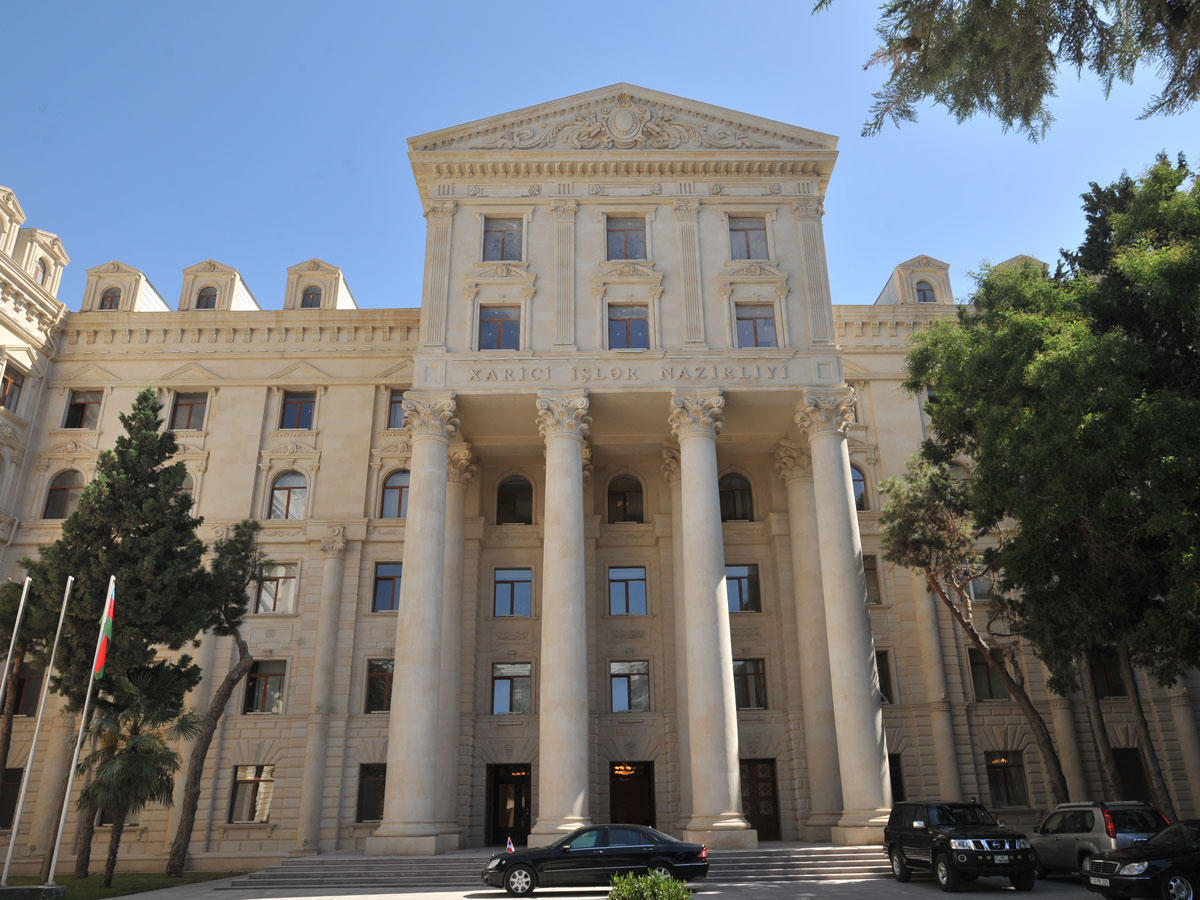Azerbaijan welcomes establishment of Russian-Turkish ceasefire monitoring centre

By Vafa Ismayilova
The Azerbaijani Foreign Ministry has welcomed the establishment of a joint Russian-Turkish ceasefire monitoring centre.
"We welcome the signing of the Memorandum on the establishment of the Joint Russian-Turkish Center for control over the ceasefire and cessation of all hostilities in the Nagorno-Karabakh conflict zone on November 11, 2020, based on the Joint Statement signed by the President of the Republic of Azerbaijan, the Prime Minister of the Republic of Armenia and the President of the Russian Federation on November 10, 2020," the ministry said on November 12.
The ministry added that the joint working group will be created shortly in this regard.
"We are pleased to note that the Joint Working Group will be established in a short time in connection with the formation and functioning of the Joint Center, to be located in the territory of Azerbaijan and carrying out control over the ceasefire regime and the cessation of all hostilities," the ministry said.
The Foreign Ministry later added: "We believe that the activities of the Joint Center will contribute to increasing the effectiveness of control over the ceasefire and thus ensuring peace and security in the region."
The clashes between Armenia and Azerbaijan resumed after Armenia launched large-scale attacks on Azerbaijani forces and civilians on September 27. Five Azerbaijani civilians were killed on the first day of the Armenian attacks. Ninety-three Azerbaijani civilians were killed in Armenian's indiscriminate attacks on Azerbaijani civilians. Azerbaijan launched counter-offensive operations that ended in the liberation of over 300 settlements, villages. Azerbaijan also liberated five city centres and the historic Shusha city.
The 44 days of war ended with the Russian-brokered peace deal signed on November 9 by the Azerbaijani, Russian and Armenian leaders. The peace agreement entered force on November 10 and envisages the de-occupation of Azerbaijan’s Kalbajar, Aghdam and Lachin regions by December 1 as well as the return of Azerbaijani IDPs to Azerbaijan’s Nagorno-Karabakh and the seven adjacent regions under the control of the United Nations High Commissioner for Refugees.
The peace agreement ended the 30-years-old conflict between Baku and Yerevan over Azerbaijan’s Nagorno-Karabakh region that along with the seven adjacent districts came under the occupation of Armenian armed forces in the war in the early 1990s. For about three decades, Armenia failed to implement the UN Security Council resolutions (822, 853, 874 and 884) demanding the withdrawal of its troops, which was the main obstacle to the resolution of the conflict.
The OSCE Minsk Group co-chaired by the United States, Russia and France had been mediating the Armenian-Azerbaijani conflict since the signing of the volatile cease-fire agreement in 1994. The Minsk Group’s efforts resulted in no progress as Armenia refused to abide by the UN Security Council resolutions.
--
Follow us on Twitter @AzerNewsAz
Here we are to serve you with news right now. It does not cost much, but worth your attention.
Choose to support open, independent, quality journalism and subscribe on a monthly basis.
By subscribing to our online newspaper, you can have full digital access to all news, analysis, and much more.
You can also follow AzerNEWS on Twitter @AzerNewsAz or Facebook @AzerNewsNewspaper
Thank you!
